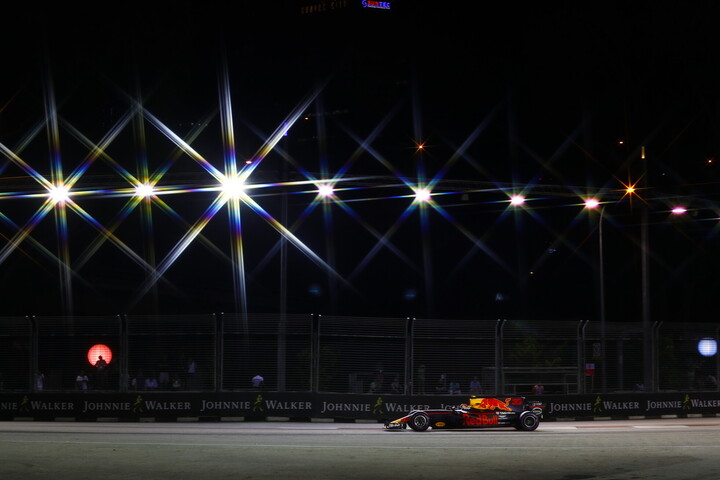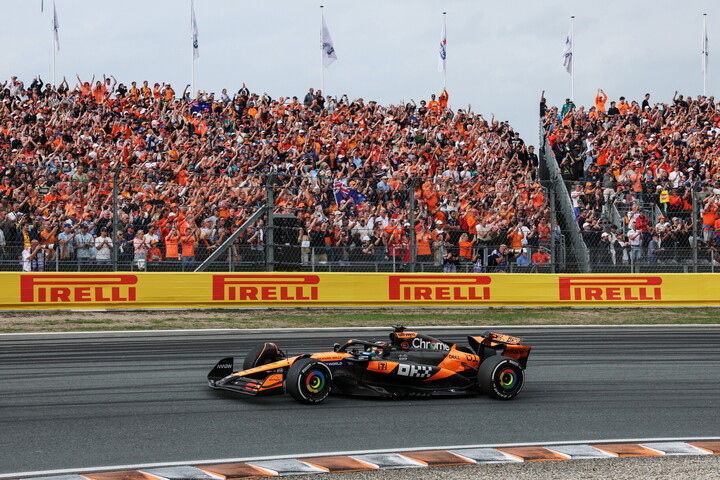On This Week #17: Ayrton Senna and the Portugal GP

There have been 113 different drivers to date to win a grand prix, but only 65 of them have won a race from pole. Very occasionally, a driver gets his first win and first pole during the same weekend – and that happened 40 years ago this week, when Ayrton Senna had a weekend that went down in history in Portugal, at the wheel of the stunning black and gold Lotus 97T, powered by Renault's 1.5-litre turbocharged V6.
In fairness, the wet and windy conditions of Sunday 21 April 1985 at Estoril was far from ideal territory for the all-or-nothing nature of the turbo Lotus, which put out around 1000 horsepower.
But Senna's talent more than adequately compensated for the difficulty of the conditions, along with the Brazilian's determination not to squander the advantage of his first pole position, gained after a superb effort (in mixed – but mainly wet – conditions) the day before.
Senna led from the start of the grand prix, and by lap 20 he had already pulled out an advantage of half a minute over his team mate Elio de Angelis in second. In the end, in worsening conditions, the race was called after 67 of the scheduled 70 laps, with the two-hour time limit having been reached. By the midpoint of the race conditions were already practically undriveable, with Senna among the drivers calling for it to be red-flagged. But this was, of course, a different era – and the local officials were determined for the action to run its course.
Once the flag finally fell, Senna had led every lap, with only the Ferrari of second-placed Michele Alboreto on the same lap as him – more than a minute behind. People may think that Max Verstappen is dominating now, but in the past the winning margins were often a lot bigger. As we said, a different era…
Senna had done most of the hard work the previous day with a stunning pole lap, for the first time in his illustrious career. He sealed his first pole with a cushion of nearly half a second over McLaren driver Alain Prost, P2 on the grid, but perhaps more pertinently, he was a whole second quicker than his team mate, who qualified fourth.

The sign of an exceptional driver is that they transcend the capabilities of their cars, and Senna claimed what was only Lotus's second win in six years on just his second race for the team. He would of course go on to claim 40 more wins and 64 other poles, before his illustrious career was tragically cut short at Imola in 1994; the day after he had claimed his final pole position.
But Portugal is where it all started, although he had of course already come close to pulling off a miracle by nearly winning the 1984 Monaco Grand Prix in a lowly Toleman – again in torrentially wet conditions.
“It was a hard tactical race, corner by corner, lap by lap because conditions were changing all the time,” said Senna after the 1985 Portuguese Grand Prix. “I lost count of the number of times I almost crashed: the car was sliding everywhere and it was very hard to keep under control. You often saw cars sliding about all over the place purely through lack of grip and too much power. Once I nearly spun in front of the pits, like Prost, and I was lucky to stay on the road.”
Many people believe that Senna's performance in the legendary 1993 European Grand Prix at Donington Park in England was his best drive ever in the wet, passing four drivers on the opening lap in what has become a piece of Formula 1 folklore. But Senna himself disagreed, rating his Portuguese victory above that.
“I had traction control then!” he said, reminiscing many years later. “Yes, I didn't make any real mistakes, but the car was much easier to drive. It was a good win, sure, but compared with Estoril in 1985, it was nothing really.”
The Brazilian went on to make winning from pole position a speciality: 29 of his total 41 wins were taken from pole position, an incredible proportion of nearly 71%.




